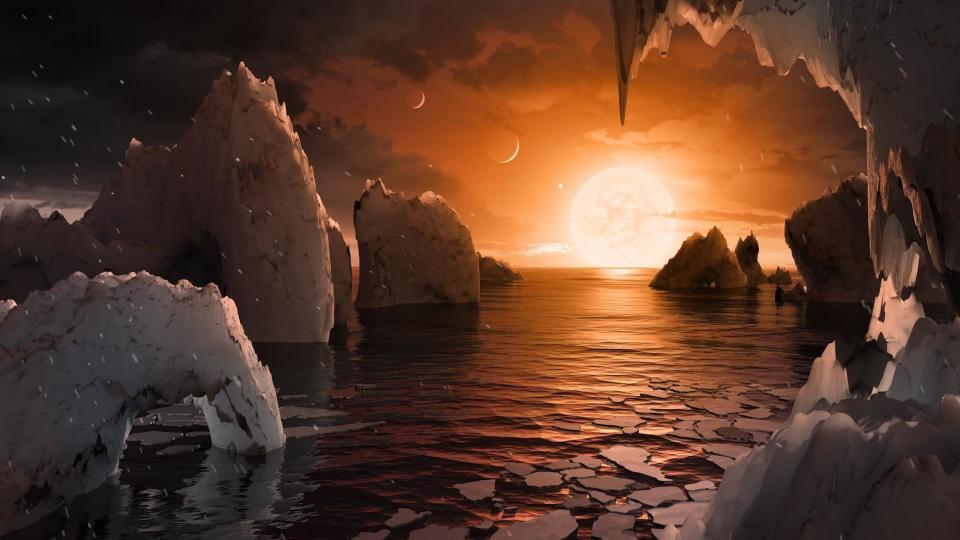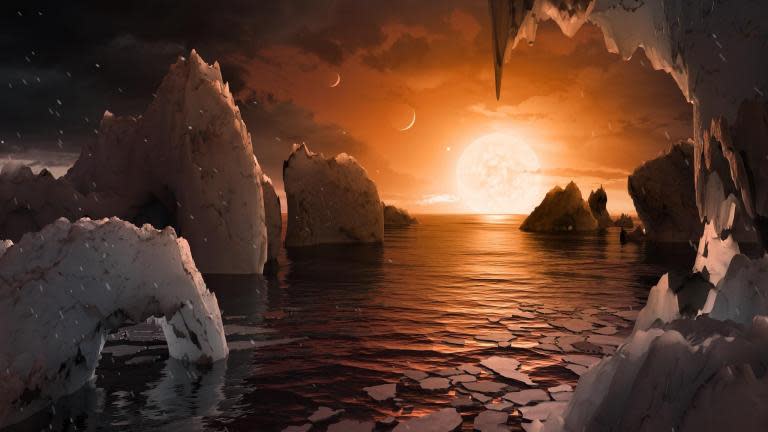Nasa announcement: What we know about the space agency's mysterious, major breakthrough
Nasa is preparing for a huge announcement from its planet-hunting telescope.
It has said only that it will brief the press on Thursday and that the discovery has been made by the Kepler space telescope. It also said that Google has been involved in the breakthrough discovery.
But beyond that it said very little. Still, some clues give us a little insight into what the major announcement might be about to actually reveal.
What's the Kepler space telescope?
The craft was launched into space in 2009, and has been looking for exoplanets ever since. It's been good at it – finding huge numbers of the exciting worlds – and Nasa has appreciated it work so much that it began another round of investigations in 2014, a year after its work was officially finished.
When the mission began, scientists didn't know how many exoplanets there were. Now they know they are more common than expected, and it's likely that every star has at least one of them.
It works by continuously scanning the sky, watching more than 145,000 stars. Scientists look out for those that occasionally dim when a planet crosses in front of them – by then tracking the patterns of that dimming, they can find out how many planets each star has and what they might be like.
Now Nasa has said that it has found something new, hosting an event "to announce the latest discovery made by its planet-hunting Kepler space telescope". The telescope finds a lot of things – but very few so interesting that they deserve their own event.
What do we know?
Nasa has given out limited information, but we can make some decent guesses based on what they've said.
It also said that four scientists would be leading the press event. Those are:
Paul Hertz, Astrophysics Division director at NASA Headquarters in Washington
Christopher Shallue, senior software engineer at Google AI in Mountain View, California
Andrew Vanderburg, astronomer and NASA Sagan Postdoctoral Fellow at The University of Texas, Austin
Jessie Dotson, Kepler project scientist at NASA's Ames Research Center in California’s Silicon Valley
Nasa always picks the most relevant and senior engineers and scientists to speak at such events, to ensure that they can answer the press and the publics' questions in the most detail. So it's possible to infer from who they've picked some details of what might be going on.
The inclusion of Jessie Dotson makes clear that Kepler will be at the heart of this discovery, and that therefore the news is going to relate to something it's sent down from space. Much of Ms Dotson's work focuses on asteroids – she helped create the Nasa team that tries to calculate how at risk the Earth is of an impact, and works there still – though she has worked on a range of different kinds of objects in space.
Andrew Vanderburg works primarily on exoplanets and their stars, using data sent down as part of Kepler's K2 mission. His expertise is in detecting and characterising exoplanets.
The other two attendees – Paul Hertz and Christopher Shallue – will presumably be representing their important organisations and the work they've done to find whatever has been discovered.
As such, the list suggests that the discovery might have something to do with exoplanets, their stars, and potentially asteroids; though Kepler is being used for more diverse functions than trying to find other Earth-like planets that are orbiting stars and could support life, it's probable this announcement will at least involve at least one such planet in some way. Beyond that, much is a mystery.
Why is Google involved?
Perhaps the strangest and most mysterious thing about the announcement – at least, beyond what the announcement actually is – is the fact that Google is involved.
"The discovery was made by researchers using machine learning from Google," the otherwise mysterious and not very detailed announcement reads. "Machine learning is an approach to artificial intelligence, and demonstrates new ways of analysing Kepler data."
Nasa and Google haven't talked about this focus on machine learning much before, so it's not clear how exactly it's being used and to what purpose. But we can have a decent guess: Google is expert at using artificial intelligence to find patterns and learn like a human, and it's probably using the technology to sort through the data being sent by Kepler to pick out things that are of interest.
The Kepler telescope is looking around the sky all the time, searching for things that might be of interest. As it does so, it sends huge amounts of data back down to Earth – far too huge for scientists to pick through as it arrives, which is why these major announcements can often take some months to actually come about.
As with other applications of machine learning, the Nasa announcement likely puts machine learning to work doing some of that automatically. Nasa is presumably letting the AI see what kinds of planets are of interest to scientists, then looking out for those itself but at great speed – researchers can then look through what's of interest and examine them as needed.
It's just one of a range of ways that humanity is trying to sort through the sheer amount of data Kepler is sending down from space. Others include the Planet Hunters project, which asks citizen scientists to get involved with flicking through the data and trying to find something that might be of interest.
So what's it going to be?
It's not clear, just yet. The best bet is that it will be at least one Earth like planet, orbiting around a star. It may have some interesting relationship with asteroids.
That's just about all we know for sure, apart from the fact that whatever the announcement is will probably be big.

 Yahoo News
Yahoo News 

